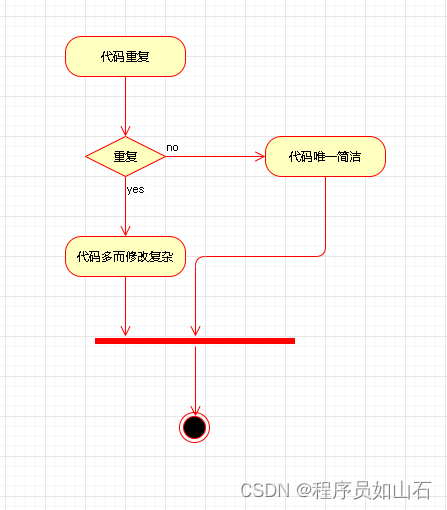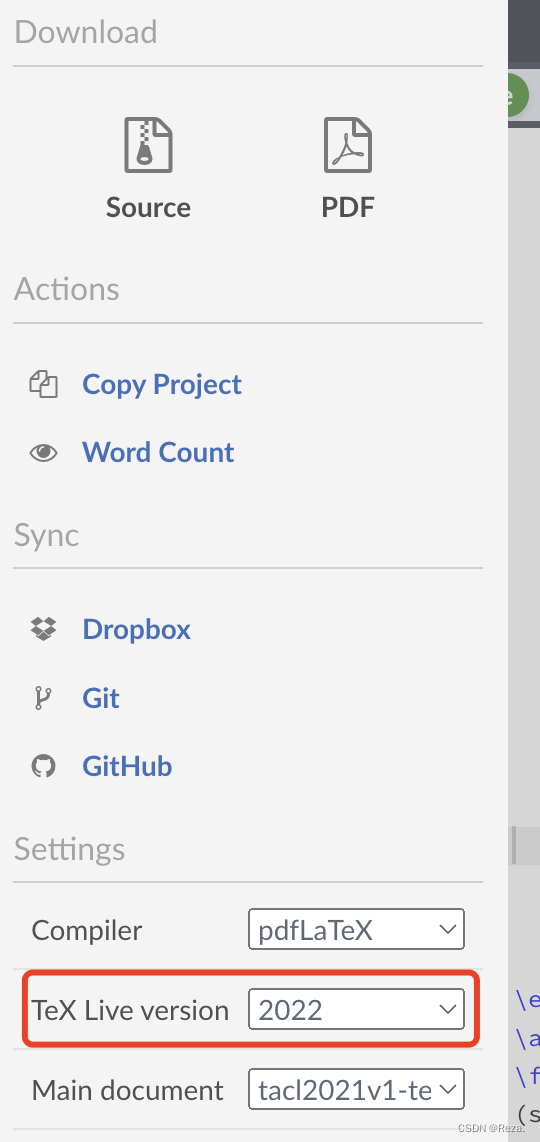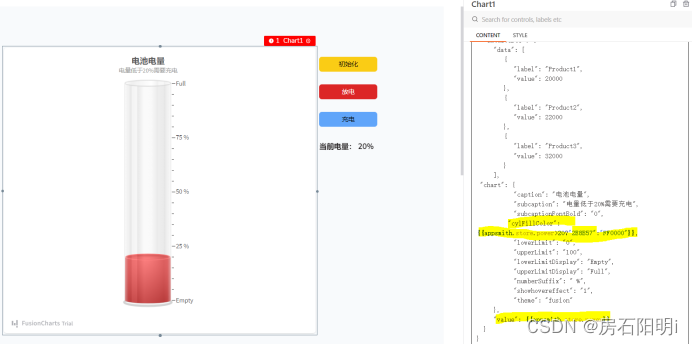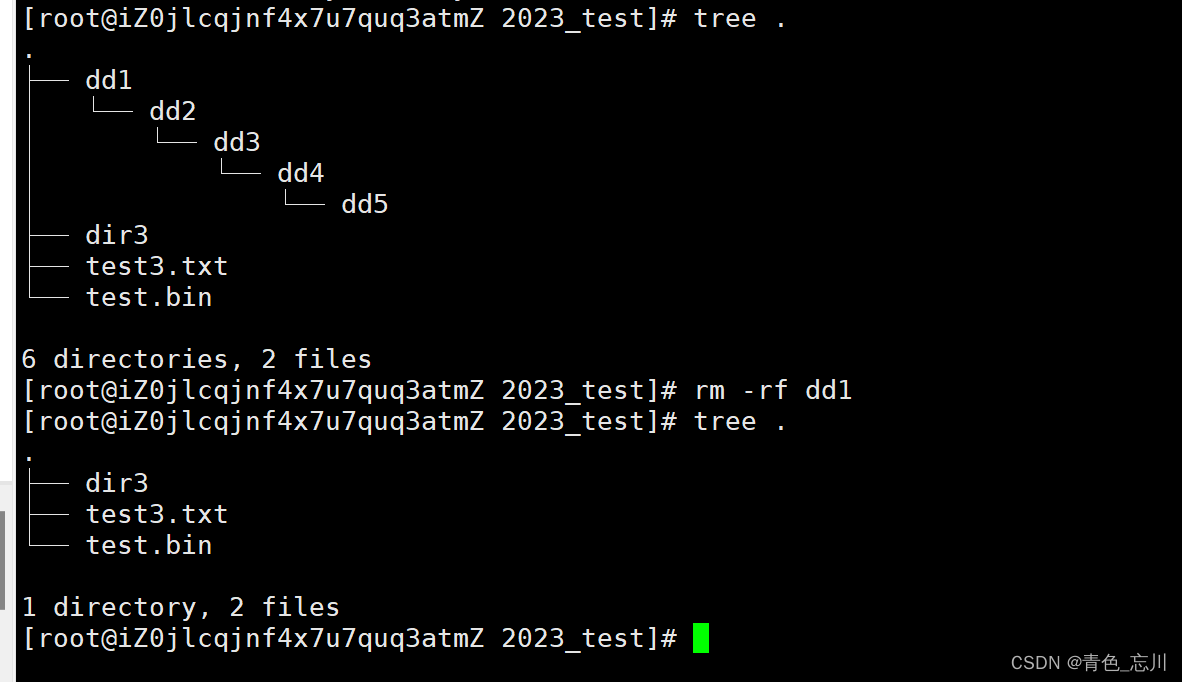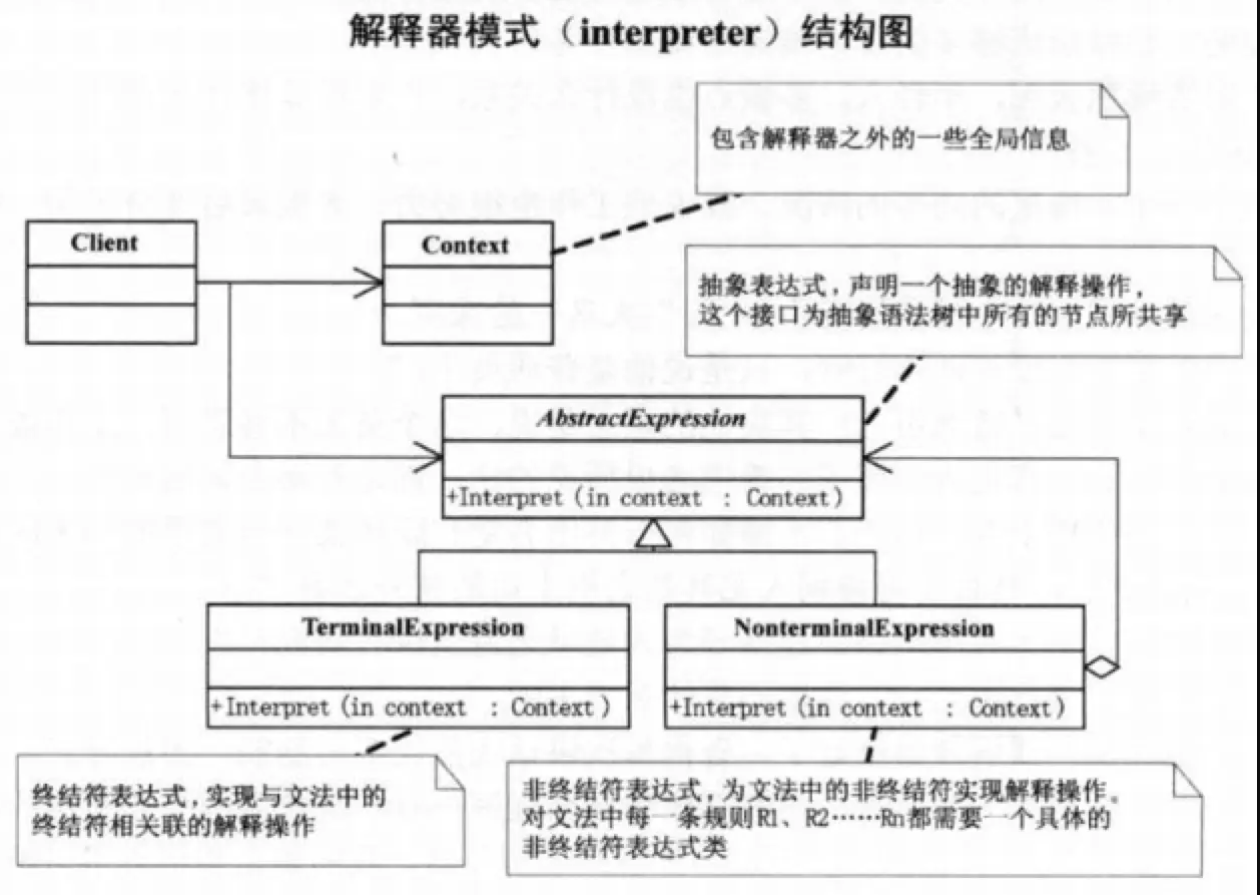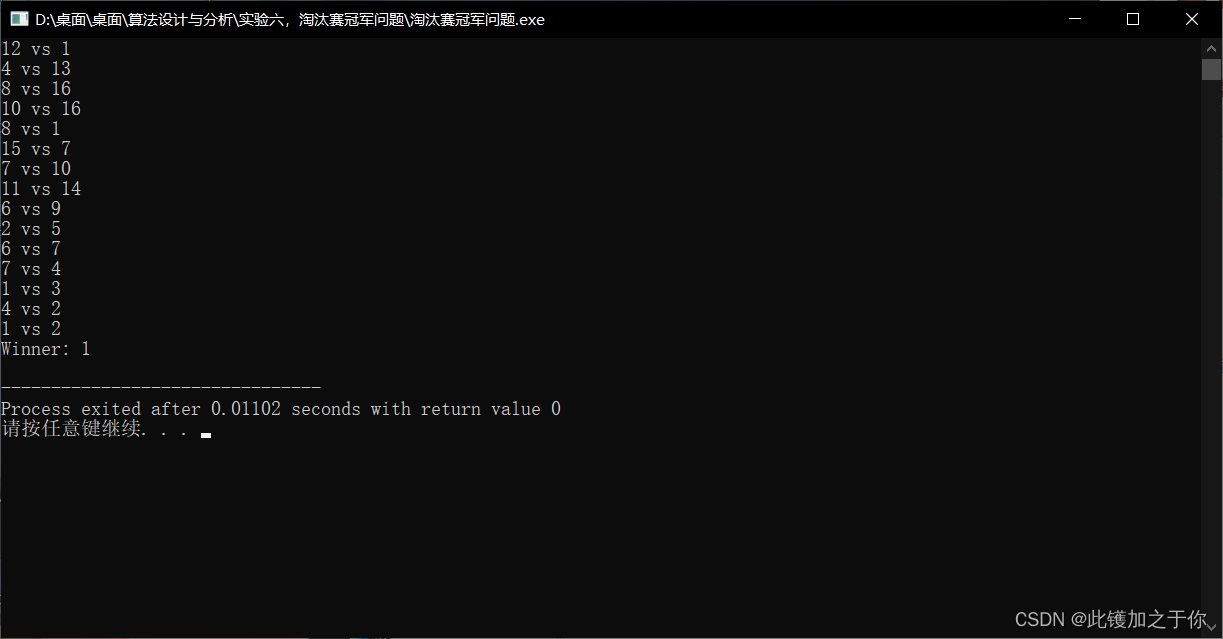目前主流的目标跟踪算法都是基于Tracking-by-Detecton策略,即基于目标检测的结果来进行目标跟踪。
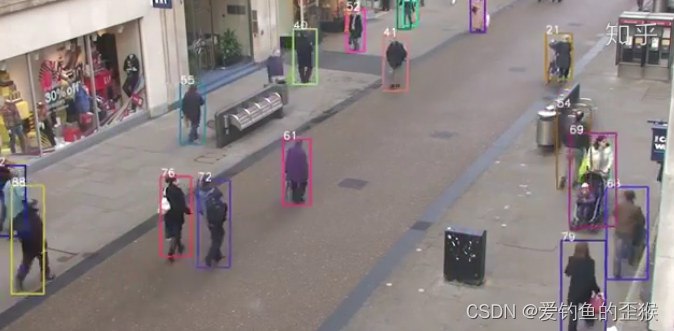
跟踪结果中,每个bbox左上角的数字是用来标识某个人的唯一ID号。那么问题就来了,视频中不同时刻的同一个人,位置发生了变化,是如何关联上的呢?答案就是匈牙利算法和卡尔曼滤波
- 匈牙利算法可以判断当前帧的某个目标,是否与前一帧的某个目标相同。
- 卡尔曼滤波可以基于目标前一时刻的位置,来预测当前时刻的位置,并且可以比传感器(在目标跟踪中即目标检测器,比如Yolo等)更准确的估计目标的位置。
目录
匈牙利算法(Hungarian Algorithm)
卡尔曼滤波(Kalman Filter)
DeepSort工作流程
三、个人总结
匈牙利算法(Hungarian Algorithm)
匈牙利算法,就是可以将分配问题的代价最小化。
例如现在有三个人A、B、C出现在视频中,目标检测器也检测出来了,但是目标检测器只能判定A、B、C三个目标都是人,不能判定A、B、C谁是谁。在DeepSORT中,匈牙利算法将前一帧的跟踪tracks与当前帧中的检测框detections进行关联,外观信息(appearance information)和马氏距离(Mahalanobis distance),或者IOU来计算代价矩阵,并得出代价最小的分配结果。
源码解读:
# linear_assignment.py
def min_cost_matching(distance_metric, max_distance, tracks, detections,
track_indices=None, detection_indices=None):
...
# 计算代价矩阵
cost_matrix = distance_metric(tracks, detections, track_indices, detection_indices)
cost_matrix[cost_matrix > max_distance] = max_distance + 1e-5
# 执行匈牙利算法,得到匹配成功的索引对,行索引为tracks的索引,列索引为detections的索引
row_indices, col_indices = linear_assignment(cost_matrix)
matches, unmatched_tracks, unmatched_detections = [], [], []
# 找出未匹配的detections
for col, detection_idx in enumerate(detection_indices):
if col not in col_indices:
unmatched_detections.append(detection_idx)
# 找出未匹配的tracks
for row, track_idx in enumerate(track_indices):
if row not in row_indices:
unmatched_tracks.append(track_idx)
# 遍历匹配的(track, detection)索引对
for row, col in zip(row_indices, col_indices):
track_idx = track_indices[row]
detection_idx = detection_indices[col]
# 如果相应的cost大于阈值max_distance,也视为未匹配成功
if cost_matrix[row, col] > max_distance:
unmatched_tracks.append(track_idx)
unmatched_detections.append(detection_idx)
else:
matches.append((track_idx, detection_idx))
return matches, unmatched_tracks, unmatched_detections如DeepSORT源码所示:
用上一帧的tracks、当前帧的detections、计算出代价矩阵 cost_matrix
执行匈牙利算法,得到匹配成功的索引对,行索引为tracks的索引,列索引为detections的索引
找出未匹配的detections,未匹配的tracks
遍历匹配的(track, detection)索引对,如相应的cost大于阈值max_distance,也视为未匹配成功,筛过后便是匹配成功的
卡尔曼滤波(Kalman Filter)
在目标跟踪中,需要估计track的两个状态:
- 均值(Mean):表示目标的位置信息,由bbox的中心坐标 (cx, cy),宽高比r,高h,以及各自的速度变化值组成,由8维向量表示为 x = [cx, cy, r, h, vx, vy, vr, vh],各个速度值初始化为0。
- 协方差(Covariance ):表示目标位置信息的不确定性,由8x8的对角矩阵表示,矩阵中数字越大则表明不确定性越大,可以以任意值初始化。
卡尔曼滤波分为两个阶段:(1)预测track在下一时刻的位置,(2)基于detection来更新预测的位置
预测:
基于track在t-1时刻的状态来预测其在t时刻的状态。
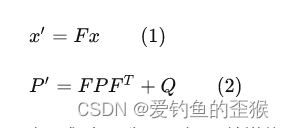
式(1)中,F为状态转移矩阵,x为t-1时刻的均值,x为t时刻的均值。可以把这个理解为新位置=旧位置*状态=旧位置 * (速度*单位时间)。
公式(2)中,P为track在t-1时刻的协方差,Q为系统的噪声矩阵,代表整个系统的可靠程度,一般初始化为很小的值,该公式预测t时刻的P'。
源码:
# kalman_filter.py
def predict(self, mean, covariance):
"""Run Kalman filter prediction step.
Parameters
----------
mean: ndarray, the 8 dimensional mean vector of the object state at the previous time step.
covariance: ndarray, the 8x8 dimensional covariance matrix of the object state at the previous time step.
Returns
-------
(ndarray, ndarray), the mean vector and covariance matrix of the predicted state.
Unobserved velocities are initialized to 0 mean.
"""
std_pos = [
self._std_weight_position * mean[3],
self._std_weight_position * mean[3],
1e-2,
self._std_weight_position * mean[3]]
std_vel = [
self._std_weight_velocity * mean[3],
self._std_weight_velocity * mean[3],
1e-5,
self._std_weight_velocity * mean[3]]
motion_cov = np.diag(np.square(np.r_[std_pos, std_vel])) # 初始化噪声矩阵Q
mean = np.dot(self._motion_mat, mean) # x' = Fx
covariance = np.linalg.multi_dot((self._motion_mat, covariance, self._motion_mat.T)) + motion_cov # P' = FPF(T) + Q
return mean, covariance更新:
基于t时刻检测到的detection,校正与其关联的track的状态,得到一个更精确的结果。
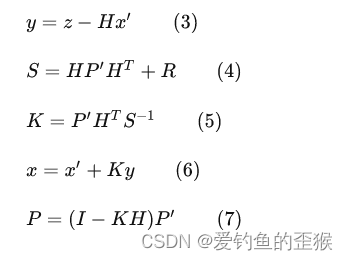
式(3)计算detection和track的均值误差。
式(4)
式(5)计算卡尔曼增益K,卡尔曼增益用于估计误差的重要程度
式(6)和式(7)得到更新后的均值向量x和协方差矩阵P
源码解读:
# kalman_filter.py
def project(self, mean, covariance):
"""Project state distribution to measurement space.
Parameters
----------
mean: ndarray, the state's mean vector (8 dimensional array).
covariance: ndarray, the state's covariance matrix (8x8 dimensional).
Returns
-------
(ndarray, ndarray), the projected mean and covariance matrix of the given state estimate.
"""
std = [self._std_weight_position * mean[3],
self._std_weight_position * mean[3],
1e-1,
self._std_weight_position * mean[3]]
innovation_cov = np.diag(np.square(std)) # 初始化噪声矩阵R
mean = np.dot(self._update_mat, mean) # 将均值向量映射到检测空间,即Hx'
covariance = np.linalg.multi_dot((
self._update_mat, covariance, self._update_mat.T)) # 将协方差矩阵映射到检测空间,即HP'H^T
return mean, covariance + innovation_cov
def update(self, mean, covariance, measurement):
"""Run Kalman filter correction step.
Parameters
----------
mean: ndarra, the predicted state's mean vector (8 dimensional).
covariance: ndarray, the state's covariance matrix (8x8 dimensional).
measurement: ndarray, the 4 dimensional measurement vector (x, y, a, h), where (x, y) is the
center position, a the aspect ratio, and h the height of the bounding box.
Returns
-------
(ndarray, ndarray), the measurement-corrected state distribution.
"""
# 将mean和covariance映射到检测空间,得到Hx'和S
projected_mean, projected_cov = self.project(mean, covariance)
# 矩阵分解(这一步没看懂)
chol_factor, lower = scipy.linalg.cho_factor(projected_cov, lower=True, check_finite=False)
# 计算卡尔曼增益K
kalman_gain = scipy.linalg.cho_solve(
(chol_factor, lower), np.dot(covariance, self._update_mat.T).T,
check_finite=False).T
# z - Hx'
innovation = measurement - projected_mean
# x = x' + Ky
new_mean = mean + np.dot(innovation, kalman_gain.T)
# P = (I - KH)P'
new_covariance = covariance - np.linalg.multi_dot((kalman_gain, projected_cov, kalman_gain.T))
return new_mean, new_covarianceDeepSort工作流程
DeepSORT对每一帧的处理流程:
检测器得到bbox
生成detections :
卡尔曼滤波预测:依据前一帧的位置信息以及速度预测当前目标所在位置
使用匈牙利算法将预测后的tracks和当前帧的detections进行匹配(级联和IOU匹配):这样卡尔曼滤波才有的更新
卡尔曼滤波更新:更新协方差以及两帧之间位置信息的差值?
个人总结
卡尔曼滤波 :根据t-1帧的目标位置信息以及速度信息预测当前帧的目标位置
匈牙利算法:给bbox分配唯一ID
ps:本来想好好深入了解下,但是网上的资料读得一知半解,还是简单了解下,拿来会用就行吧
本来系以下参考的理解,基础好的同学可以细细读原文
参考:
目标跟踪初探(DeepSORT) - 知乎
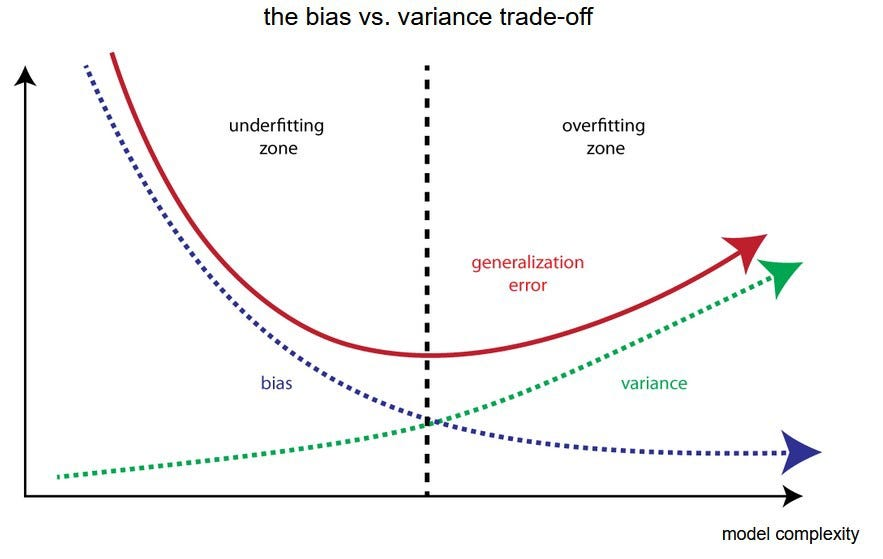

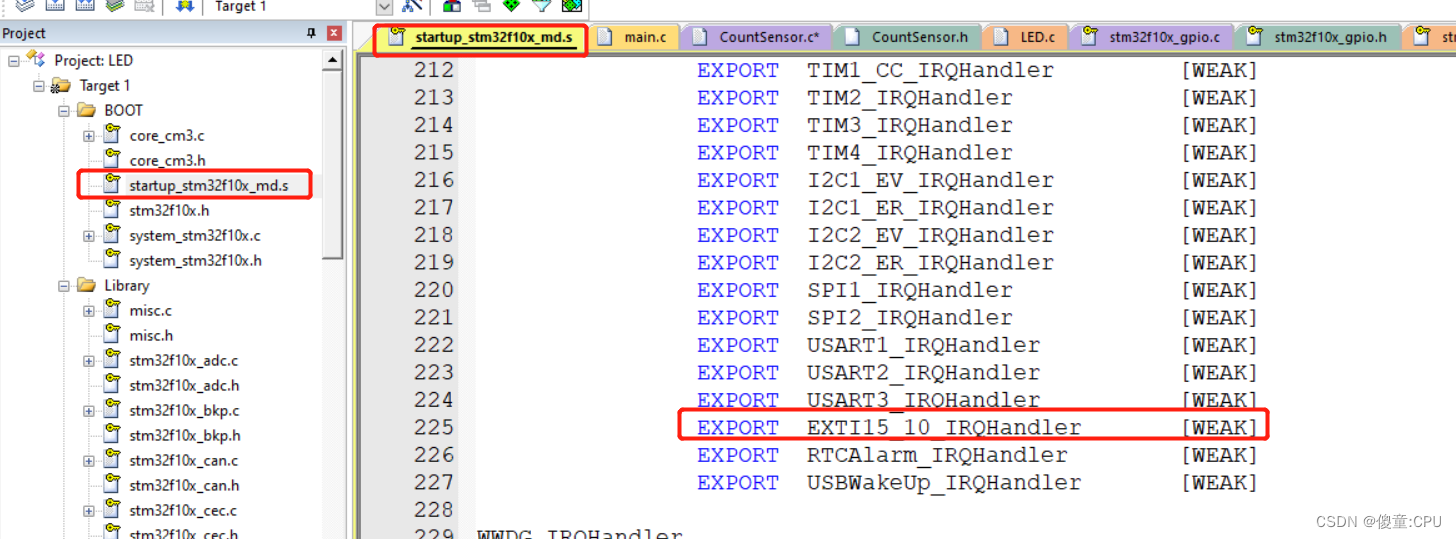





![[Linux]网络连接、资源共享](https://img-blog.csdnimg.cn/125fdc25a0fe40dc85b8be8f28db4266.png)




